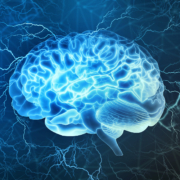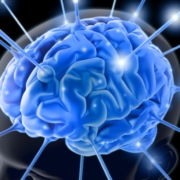Cutting through the (brain) fog
More than three years after the start of the Covid-19 pandemic, neuropsychologists and neurologists are learning more about one of the scariest symptoms: brain fog. Dr. Gabriel de Erausquin is one of the experts leading the charge. The bespectacled de Erausquin is director of the Laboratory of Brain Development, Modulation, and Repair at The Glenn Biggs Institute of Alzheimer’s and Neurodegenerative Disorders. He also serves as professor of neurology and radiological science in the Joe and Teresa Long School of Medicine at the University of Texas Health San Antonio. Since 2020, de Erausquin has been researching brain fog and its similarities to what happens in the brains of patients with dementia. BrainWise Managing Editor Matt Villano recently sat down with him to learn more.
BrainWise: What is brain fog?
Dr. Gabriel De Erausquin: It is not a medical term, but a phrase people use to describe a range of symptoms including poor concentration, confusion, thinking more slowly than usual, fuzzy thoughts and slower-than-usual short-term memory. In most cases it is temporary or improves over time.
BrainWise: How did your research into this area begin?
Dr. de Erausquin: When the pandemic began, in January and February of 2020, of the things that caught my attention was that people were complaining of impairment in recognizing smells, a symptom that doctors referred to as anosmia. The reason that caught our attention is that anosmia, or lack of ability to recognize smells, is a very common early symptom in several progressive diseases of the brain—specifically Parkinson’s disease, Alzheimer’s disease, and other forms of dementia. That suggested the possibility that the virus was affecting the brain in one way or another. So, we set out to lay the groundwork to collaborate long-term on [researching] the possible consequences of the virus on brain performance and brain function. To do this, we used the platform of a collaborative group within the World Health Organization: Experts Advisory Committee on SCANs. SCAN is an instrument, an assessment instrument, called Schedules of Clinical Assessment in Neuropsychiatry. It’s been around for 30 years, and it’s considered the gold standard as an assessment instrument for neuropsychiatric symptoms, meaning behavioral changes and subjective complaints, including memory complaints, including changes in motor performance and such. This group was meeting in February 2020 in New Delhi. This happened just at the time India was about to close for COVID restrictions, and we had the opportunity to discuss this thing at the very outset and start planning long-term studies. A few months later, the Alzheimer’s Association came on board and brought a significant additional network of people. The consortium exploded, basically, to include something like 100 different institutions in 39 or 40 different countries. That has continued to work with different fluctuating participation over the past several years.
BrainWise: What were the first steps?
Dr. de Erausquin: One of the first questions was, ‘How do you compare?’ Put differently, what do you do to compare cognitive performance across all these different samples in a way that makes sense to include the different levels of cultural, not culture, but rather educational attainment, so different levels of average school participation or literacy, as well as different cultural environments? It’s not the same if you are reading Chinese or Japanese symbols or if you are reading Latin-style characters, or if you’re not reading at all, if your language is spoken, as is the case in the Quechua language, for instance, in the mountains of South America. We had all these different possibilities and we had to come up with recommendations on how to test cognitive change across all these different samples. So that was the outset of the neuropsychological expertise group within the consortium that spent the better part of 2020 and early 2021 working out the consensus. We had some interaction at the time with the International Neuropsychological Society. They had their own vision of how to do things, so it didn’t coalesce into a single effort, but we had some conversations about what they thought was important or ideal. Eventually, the whole thing coalesced into a set of recommendations that were part of a much larger research publication, with the harmonization of the consortia groups on how to test cognitive assessment. A separate grant from the National Academy of Neuropsychology and the Alzheimer’s Association, was intended to create a tool, an app, or a series of apps, that were to be deployed on Android devices, because they are much more prevalent worldwide than iOS devices, and that contained the minimum cognitive assessment that we had all across the world agreed that was necessary for this task. So that was done, that tool is done, is completed, and it’s being tested now.
BrainWise: What are some of the questions you answered after that?
Dr. de Erausquin: In parallel with the deployment of the cognitive assessment on the tablet, we started collecting data, and there are two different efforts that were done in that direction. One of them was a so-called pooled analysis and meta-analysis of cognitive data across the entire consortium that was recently completed, as well. The results were presented in Amsterdam at the Alzheimer’s Association International Conference, and that included a data analysis of cognitive impairment post-COVID in individuals from samples in India, Chile, Argentina, Russia, the UK, Canada, and I’m forgetting a couple of countries. Anyway, it was a large sample, with several thousand people from multiple different cultures. We found there was confirmation, really, of something that we already thought was present, which is a combination of two different types of consequences to COVID. There seems to be two different syndromes. One of them that happens in younger people tends to affect more commonly women than men and, if you will, is less severe. That’s what’s typically described as ‘brain fog.’ This seems to be somewhat reversible or at least less severely chronic. It tends to affect primarily sustained attention, a little bit of the ability to organize tasks, and executive function. And it’s related to lack of stamina, mental stamina, physical stamina on the one hand, and also related to preexisting mood or anxiety symptoms.
This is very different from a second syndrome that is seen primarily in people older, who are 60 years of age, and that is equally frequent in males and females, no distinction there, and that appears to be much closer to what you expect to see in a person with early Alzheimer’s disease. These folks have clear memory impairment, particularly short-term memory impairment, the episodic type. They also hey have much more prominent language impairment. In more severe cases, they have trouble with putting together practical tasks. This second syndrome looks to be very much like an early Alzheimer’s-type of clinical picture. It’s also associated with changes in brain volume. We were not the first ones to report that. That had been reported by the Brain Bank in the UK, but we confirmed it in a larger sample. And we also have found that—perhaps not entirely surprisingly—it’s also affected by your genes. So the risk of having cognitive decline after COVID appears to be inherited, at least in part.
BrainWise: Can you please elaborate on the differences between the two syndromes?
Dr. de Erausquin: The first syndrome is clearly different in that it doesn’t affect memory. It affects primarily attention and concentration and mental stamina, and physical stamina. The two studies that looked at this specifically found that it tends to improve over time. It doesn’t improve on everybody, but it tends to improve over time. And so there is some hint that, at least for a proportion of the people who complain of these symptoms, it is reversible or improving over the first year after the infection. The picture of these younger folks who have it, as I said, are mostly women, younger, often with a history of affective or anxiety symptoms prior to the infection. In some cases, it has looked like this is more akin to the picture of chronic fatigue syndrome, fibromyalgia, postviral encephalomyelitis and other postviral and chronic presentations that are not particularly specific to COVID. This is all very different from the picture of the memory decline that you see in older folks. Those symptoms were clearly Alzheimer’s-like, in the sense that it doesn’t seem to reverse. It seems to be progressive. It doesn’t distinguish male or female and it doesn’t require any preexisting disease or symptoms of neuropsychiatric type as in the case of the brain fog. These folks often don’t have any history of any impairment before. They just present with memory impairment.
BrainWise: What happens in the brain to cause these syndromes?
Dr. de Erausquin: It’s another very important question and one that we don’t have a definitive answer yet. There are several changes in the brain that have been associated with COVID, particularly with acute COVID, and those are mostly vascular, microbleeds, microhemorrhages, and changes in white matter that are consistent with ischemic changes. None of the early data supports the possibility of direct viral effects on the brain. If it did happen at all, it was rare. What seems to have happened is either one of the two things: either the inflammatory changes that were triggered by the virus caused persistent changes in the brain and that’s the so-called vascular hypothesis, or the invasion by the virus of the olfactory bulb, which is the initial brain stop of the olfactory system, was enough to cause what’s called transneuronal or distant effects of the presence of the virus in those neurons. It may be that all that was needed was the presence of the virus in the olfactory bulb for a period, and then several remote effects of that presence followed, changing function in the brain or perhaps structure in the brain in the connections of the olfactory bulb, the so-called extended olfactory network. Both these things seem to happen, but they don’t necessarily represent the same disease process. In fact, they may happen in different people with different susceptibilities and that may account for the fact that we are finding an interaction between memory loss and the genes. To put it differently, it may well be that only susceptible people who have a particular genetic makeup are the ones who got the severe loss of smell and the remote changes in the olfactory network over time and those are the ones who are picking up as Alzheimer’s-like or memory decline in the older folks. Whereas the nonspecific inflammatory postviral changes may be what accounts for the more common syndrome of brain fog in younger folks. This is entirely hypothetical on my part. I don’t have data to support any of what I just said. I mean, accepting directly what I just mentioned, that we know that there is a link between anosmia and memory loss, that we have shown very clearly, and others have. We know that that link is also associated with specific changes in the size of the structures of the brain that are associated with the olfactory function. And we know that there is some form of genetic predisposition that increases the risk of having those problems. And so, we can reasonably hypothesize that it’s one explanation for memory loss. The other, the inflammatory pathway associated with chronic fatigue and brain fog, that’s much less established on the data, much less supported by the data. It is speculative on my part.
BrainWise: What are the next questions you’ll ask? Where does the research go from here?
Dr. de Erasquin: The crucial questions now are: What are the genetic contributions to this? What are the biological mechanisms underlying it? Do we have any targets to prevent it or reverse it? The data we’re collecting include whole-genome sequencing scans of all these folks in very different settings, with and without infection, with documented vaccines and without vaccines, vaccinated before and after having COVID. We know what variants of COVID they were infected by. And we have blood-based biomarkers of neurodegenerative processes, Alzheimer’s-like, and of inflammatory processes. And we have brain imaging, both functional and structural brain imaging data. We will do that longitudinally, so we’ll be able to assess trajectories and assess the impact of all these variables on functional brain imaging, on structural brain imaging, on cognition, of course, and assess the predictive value of the specific gene variations or specific genes on all these things.
NAN and the Alzheimer’s Association partnered in 2021 to offer eight grants totaling $800,000 for research focusing on the impact of COVID-19 — including cognition, behavior and overall functioning — in older adults from health disparity populations. Some of that funding was routed to research cited in this piece. For more information about the grants, click here and here.









